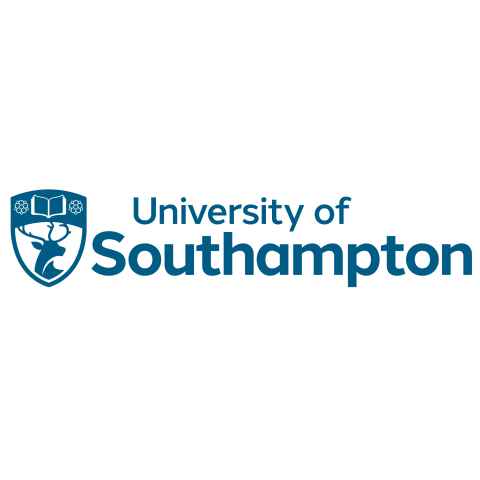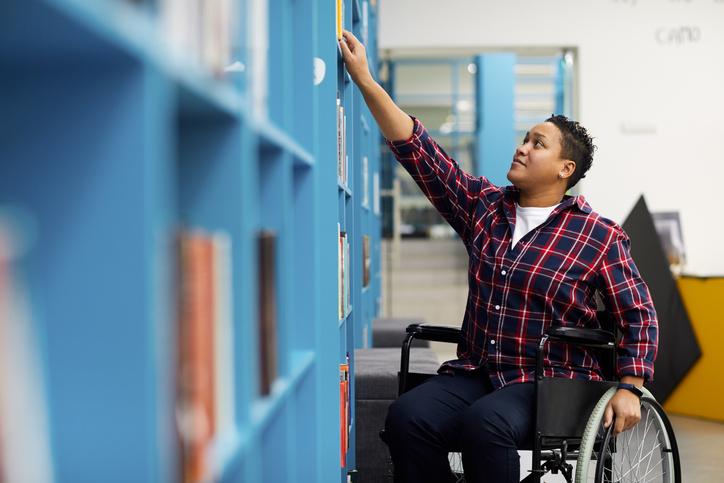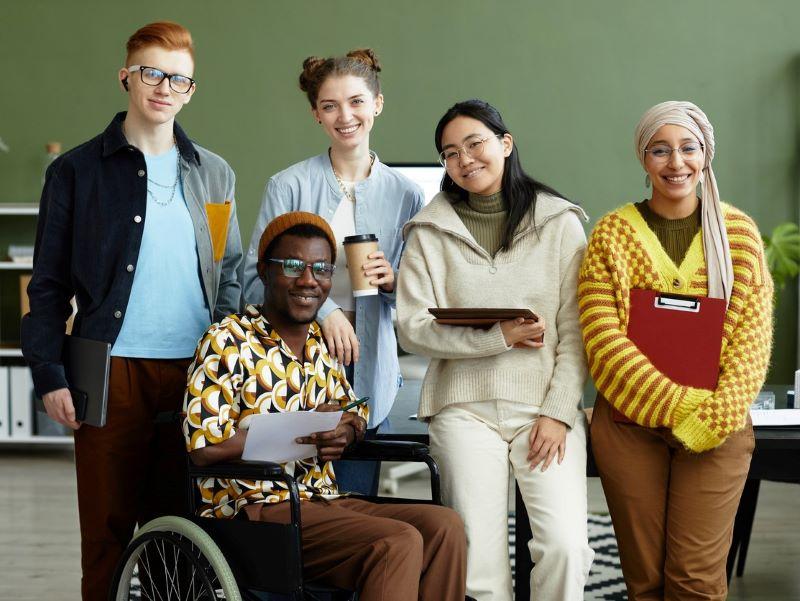
Apply the social model of disability to HE: viewing inclusion as a social good
The social model of disability is a framework that emphasises how social, cultural and environmental factors shape disability. The aim is to empower individuals and create a more inclusive society by removing pre-existing systemic barriers, such as inaccessible infrastructure, discriminatory attitudes and lack of inclusive policies or support systems. Put simply, it is incumbent on society to create an enabling world.
The approach contrasts with the dominant medical model of disability that frames disability as a limitation that is inherent to an individual. In this article, we present 10 benefits of applying the social model of disability to higher education and conclude with a pragmatic case for viewing inclusion as a social good.
1. Compliance with legal requirements: Embracing the social model of disability ensures that universities comply with legal requirements and avoid disability-related discrimination. The strategic approach ensures this by default, viewing compliance as the absolute minimum rather than a “tick-box” exercise to avoid legal action.
2. Institutional reputation: Adopting such a model not only avoids negative headlines concerning the treatment of disabled students, but it also helps to provide a positive image of the university and attract students seeking an inclusive learning environment.
3. Equal opportunities: By eliminating societal barriers, universities can provide accommodations, support services and assistive technologies whereby all students can fully engage in educational activities and achieve their academic potential.
- What I’ve learned from a decade of working with a disability in academia
- ADHD in higher education: is digital learning making it worse?
- We need an integrated approach to inclusion in higher education
4. Empowerment and self-advocacy: The social model of disability empowers students to become self-advocates, foster independence and prepare for the university-work transition.
5. Inclusive learning environment: Accessible campuses, student accommodation, inclusive curriculum design and supportive learning environments for disabled students can create a sense of belonging and increase participation in university life.
6. Diverse perspectives and enhanced learning outcomes: The creation of inclusive and accessible environments ensures that all students can benefit from diverse perspectives and experiences. Subsequently, disabled students and their peers benefit from discussions and a more comprehensive understanding of the subject content and each other.
7. Innovation and problem-solving: Linked to the previous point, including disabled students in university education encourages innovative thinking and problem-solving. The unique experiences offer new perspectives and insights, leading to creative ways to provide solutions to various challenges.
8. Employability and career development: The adoption of inclusive practices as offered by the social model of disability can help disabled students prepare for the university-work transition, subsequently contributing to a more inclusive workforce.
9. Mental health and well-being: By fostering a sense of belonging, providing support systems and promoting positive mental health practices, inclusive approaches in higher education can enhance well-being and resilience during university studies and across one’s career and lifespan.
10. Social impact: Linked to the previously mentioned benefits, applying the social model of disability enables universities to contribute to a broader social impact by promoting equality, challenging discrimination and advocating for the rights of disabled people. The actions align with the principles of social justice and can inspire positive change beyond the university campus.
Our attention now shifts to making the case for viewing inclusion as a social good. Unfortunately, inaccessible physical environments, evaluation and assessment methods, resource constraints, diversity of students’ needs and lack of staff training are some systemic barriers to the real-world delivery of the social model of disability within higher education settings. What we need is a mind shift away from disability as being an inconvenience and the view that avoiding legal action is sufficient compliance – to a new perspective where we design everything from physical infrastructure to curriculum in a way that the default is accessible for everyone. This will require buy-in from various stakeholders across the university ecosystem and overcoming systemic barriers at the societal level.
Clearly, it is not possible to make all of these changes immediately – but that should not stop us from making incremental changes while ensuring long-term strategic policies to overcome pre-existing design limitations. Let’s develop innovative evaluation and assessment approaches that accommodate diverse learning styles to capture the full range of student capabilities via fair and accurate assessments. This will require investment and training, so universities may want to consider partnerships with employers, governments and other stakeholders with expertise in facilitating inclusion.
It is reasonable to expect buy-in support from these stakeholders since the benefits of applying the social model of disability to higher education transcend the labour market and broader society. For example, if more disabled graduates enter the labour market, this can help organisations and national governments overcome challenges related to a lack of available talent and ageing populations. Diversity of views can also enhance innovation and profitability and ensure contributions from key voices around accessible design. Enhanced interaction with disabled people can help to improve social attitudes to inclusivity and create a sense of global citizenship. More importantly, it can help people with disabilities to feel included and accepted and to lead more fulfilling lives.
However, it is arguable that the most significant and intractable systemic barrier is, sadly, in the mind. That is to say, in the values and attitudes, culture and climate of an ableist society. The mindset shift that is demanded has to demonstrate profound learning, where inclusive thinking becomes intuitive and fundamental to the identity of every member of a higher education community. We have a long way to go.
To conclude, we believe that the social model of disability can significantly enhance the university experience of disabled students, leading to benefits for students, universities, graduates, employers, national governments and broader society. Change is rarely easy – but we call on you to be advocates, listen to disabled people and help to drive innovation in an inclusive and tradition-breaking way.
William E. Donald is an associate professor in sustainable careers and human resource management at the Ronin Institute, US, and the University of Southampton, UK.
Marius Frank is the head of education for Microlink, specialising in facilitating disabled people reaching their potential across educational and workplace settings.
If you would like advice and insight from academics and university staff delivered direct to your inbox each week, sign up for the Campus newsletter.




